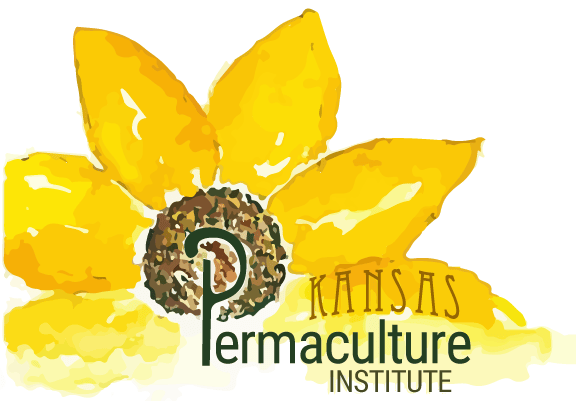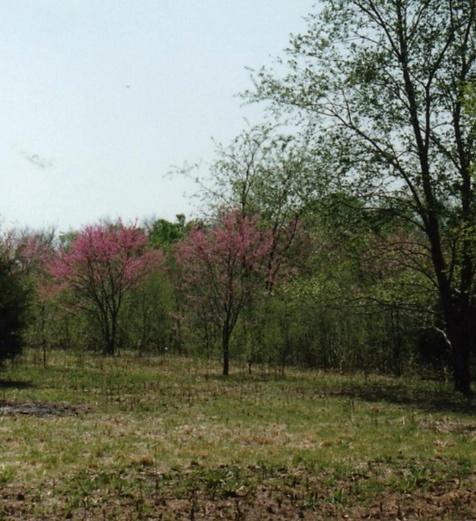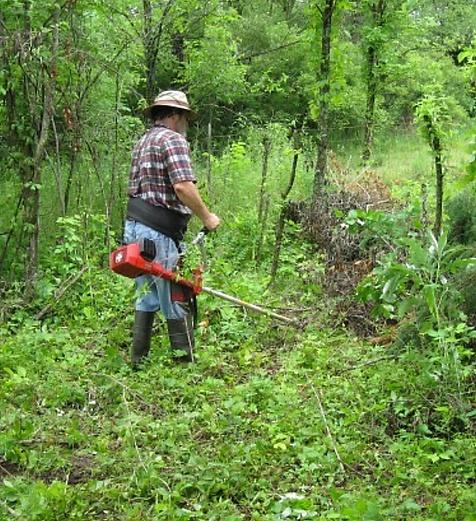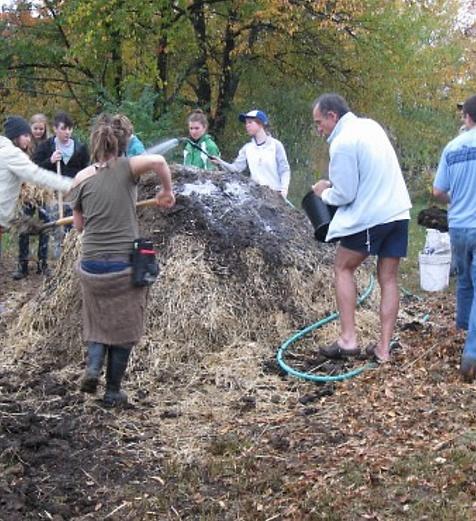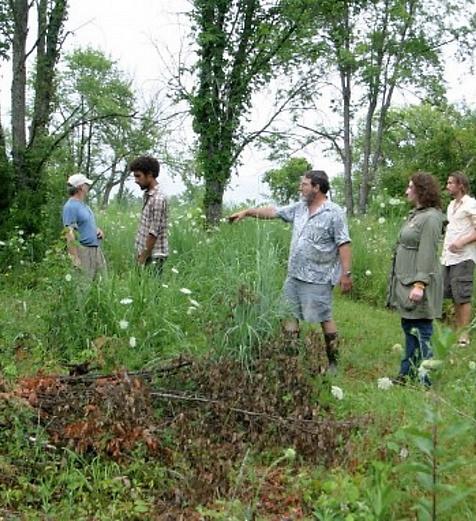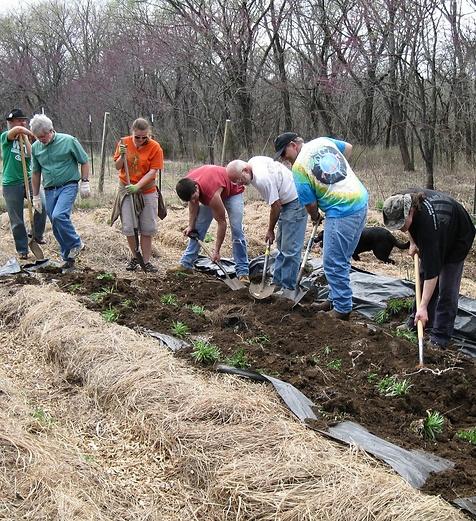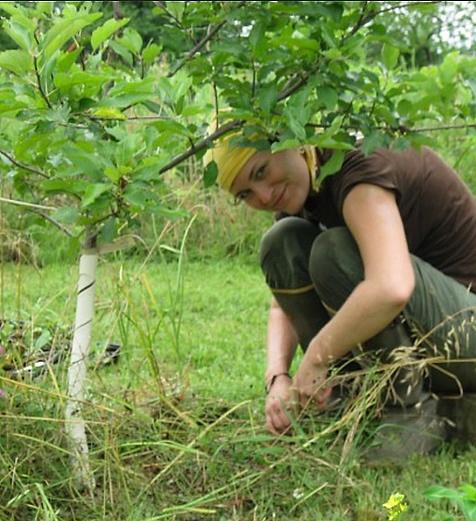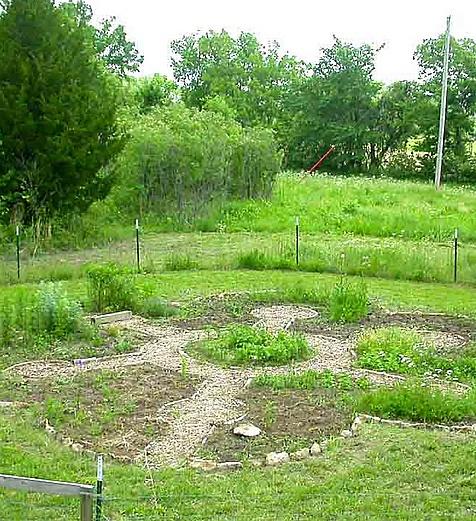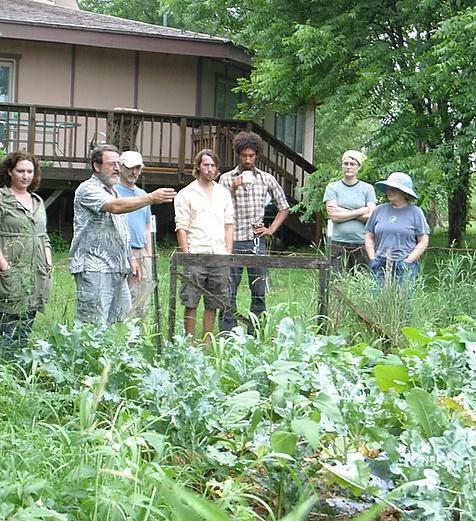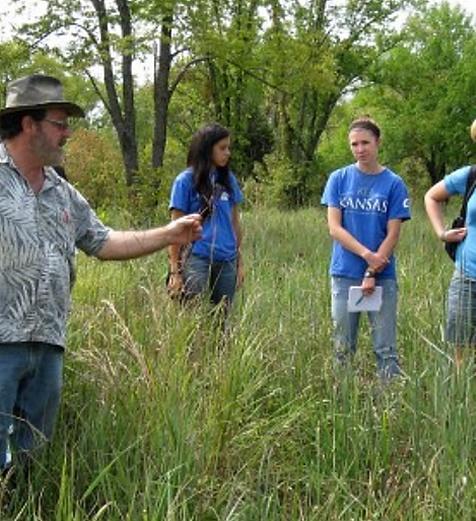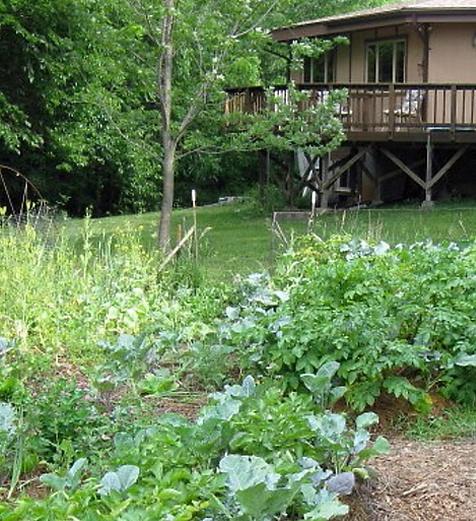Vajra Farm and Permaculture Center
KPI’s first Permaculture site managed by the late Steve Moring.
When Steve and Nancy Moring purchased the 45-acre property in Oskaloosa, Kansas, they found a landscape that was comprised of about 50% old-field and woodland in mid-phase succession. The abandoned fields were overgrown with invasive shrubs, cedars, and small trees. In 1998, the couple started restoring prairie grasses where cropland existed 25 years before.
A year later, the couple designed and built a farmstead with the primary goals of restoring native grasses, creating a medicinal plant botanical sanctuary, and producing organic vegetables.
Beginning a Life with Permaculture
In 2006 the Morings began to shift their focus to permaculture-designed gardens and landscape themes. They learned quickly that they were doing many things the hard way by having animal pens and our greenhouse inefficiently located on the property.
In the vegetable gardens, they went from conventional cultivation practices to double digging beds, then no-till raised beds, and polyculture planting with annuals and perennials. They expanded their gardens to include a mandala-shaped keyhole garden and a sun trap layout surrounded by fruit trees.
Polyculture Mandala Garden
After reading Dave Jacke’s books on creating forest gardens, the Morings became inspired to do the same on Vajra Farm. By 2008, the couple had established multiple vegetable and herb gardens, vineyards, and a healing garden. It was time to start thinking about a greater diversity of crops and greater food production.
The idea of a polyculture forest garden system sounded fantastic. Once planted and established, it would support itself with little intervention from me, the farmer, and would produce an abundance of fruit, nuts and forage. But could it be done? In Steve’s way of thinking, life is a process of creating unique and beautiful things.
Keyhole Maze Garden Beds
In the fall of 2008, Steve started making maps and diagrams of his vision for a series of forest gardens. To the north of his new home was about one acre of a five-acre area that was neglected in his early years on the farm. It was wild, full of young trees, shrubs, thorny vines, and cedars. This was to be his place of experimentation. He reckoned that he could clear out the brush and vines, where one might plant some pecan, large nut oaks, hickories, and chestnut trees. So that year he planted a few chestnuts and shellbark hickories on the margin of the cedar and dogwood thicket and a strip of the prairie. These trees survived the winter and leafed out in the following spring.
Forest Garden – Chop and Drop Clearing
Encouraged, he developed a plan to create a food forest. In the fall of 2009, Steve applied for a USDA Sustainable Agriculture Research and Education (SARE) farmer/rancher grant to help fund the creation of forest gardens as training sites. To his surprise, he was awarded the grant, and he immediately began planning two garden projects.
On Vajra Farm, Steve called for a community crop mob. This is a concept where members of the community participate in a rotating farm help program, much like the Amish tradition. In June 2010, about six people came out to the farm to cut the brush with shears and hand saws, using the chop-and-drop method. This way, most of the vegetative debris was left to decompose into the soil. That summer, Steve continued cutting brush and, with the help of a couple of farm apprentices, stacked branches and small trees that we cut into a series of woody berms to impede the flow of surface water across the forest floor.
Preparing Brush Berms in Forest Garden
The Morings then began planting sapling chestnut, pecan, chinquapin oak, and pawpaw trees. They ringed the trees with poultry wire and mulched them with wood chips. Following the tree planting, we began planting nitrogen-fixing species, including a ground cover of red clover and plantings of Russian pea shrub, wild senna, autumn olive, chickling vetch, comfrey, garlic, and daffodils. All the planted species were watered weekly, or as needed, into the fall and mulched in preparation for winter.
In the spring of 2011, the Morings planted more fruit trees, including Asian pear, disease-tolerant apples, cherries, plums, apricots, and peaches. In the fall, we planted a hedge of hazelnut shrubs.
In 2012 the couple planted many other supporting perennial herbs, and beneficial insectary species around our fruit and nut trees, creating guild microhabitats. The summer was a struggle to keep the trees watered as a severe drought, and record heat ensued.
The project is currently ongoing. While Steve Moring recently passed on to permaculture heaven, Nancy and people from the permaculture community have continued planting more supporting species and cultivating tree guilds.

